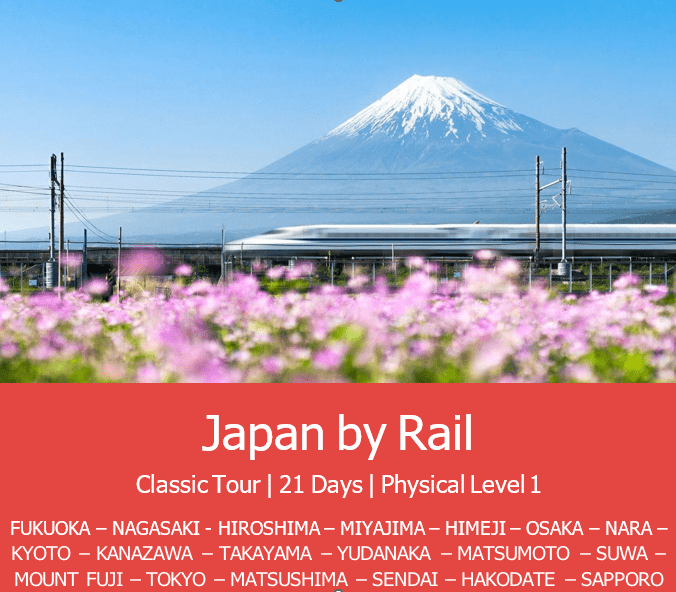
For those where time is no limit, this is the ultimate top-to-toe tour of Japan covering three islands in one trip – Kyushu, Honshu and Hokkaido whilst travelling on the bullet train. From rural villages to bustling cities, from coastlines to alpine and from ancient traditions to new-world charm.
• Reflect in Nagasaki & Hiroshima
• Admire Kyoto’s temples
• Search for Snow Monkeys in the Japanese Alps
• Explore bustling Tokyo
• Discover Sendai & Hakodate
• Spend time in Sapporo
TOUR MAP

JAPAN BY RAIL TOUR INCLUSIONS:
• Return international economy flights, taxes and current fuel surcharges (unless a land only option is selected)
• All accommodation
• All meals
• All sightseeing and entrance fees
• All transportation and transfers
• English speaking National Escorts (if your group is 10 or more passengers)
• Specialist advice from our experienced travel consultants
• Comprehensive local travel guides
The only things you may have to pay for are personal expenditures e.g. drinks, optional excursions or shows, insurance of any kind, customary tipping, early check in or late check out and other items not specified on the itinerary.
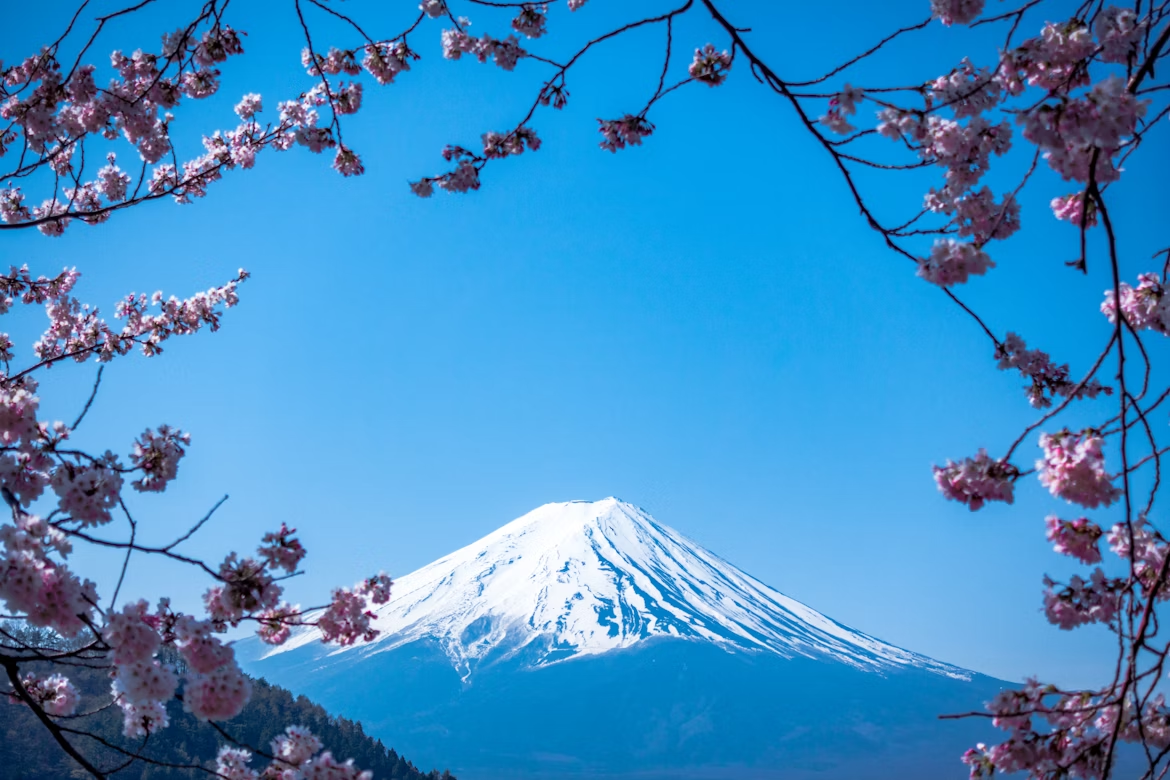
CLASSIC TOURS:
These tours are designed for those who wish to see the iconic sites and magnificent treasures of Japan on an excellent value group tour whilst travelling with like-minded people. The tours are on a fully-inclusive basis so you will travel with the assurance that all your arrangements are taken care of. You will be accompanied by our dedicated and professional National Escorts and local guides, whose unparalleled knowledge will turn your holiday into an unforgettable experience.
PHYSICAL LEVEL 1:
Our tours come with a physical rating to guide you in selecting a holiday that suits your comfort level. Joining any of our tours involves independent mobility and the ability to stay active throughout the day, which is essential for fully enjoying the unique charm of each destination.
‘Japan By Rail’ falls under a Physical Level 1 category. This indicates a level of fitness that allows you to comfortably remain on your feet with occasional rest. Expect to effortlessly navigate boarding and disembarking from various modes of transport, including coaches, trains, and boats. You’ll be walking around remarkable sites and ascending steps to capture those awe- inspiring views!
Please Consider:
• Sightseeing may often involve walking for a reasonable duration, sometimes over multiple steps, or uneven surfaces.
• Boarding and alighting from various boat sizes independently is part of the experience.
Our National Escort is dedicated to providing a high level of service and support throughout your journey. However, their primary role is to manage the daily aspects of the tour. They are unable to offer extensive personal physical assistance. We kindly ask our travellers to be prepared for the physical aspects of the tour to ensure a comfortable and enjoyable experience for everyone.
JOINING YOUR TOUR:
For travellers that have booked a ‘Land Only’ tour with no international flights, please note the price includes your arrival/departure airport transfers if you are arriving on the start and departing on the conclusion date of your tour, or when booking pre/post night accommodation with Wendy Wu Tours.
Join the tour on Day 2 in Fukuoka and end the tour on Day 21 in Sapporo. Please refer to your final itinerary for more specific meeting instructions pertaining to your departure. An informal Welcome Dinner will be held on Day 2 of the itinerary. If you miss this due to your arrival time, all information will be provided to you at breakfast the following morning.
ITINERARY CHANGES:
It is our intention to adhere to the day-to-day itinerary as printed; however, the order of events or sightseeing may change as we look to improve our tours or as local conditions dictate. In these circumstances we will make the best possible arrangements maintaining the integrity of your trip.
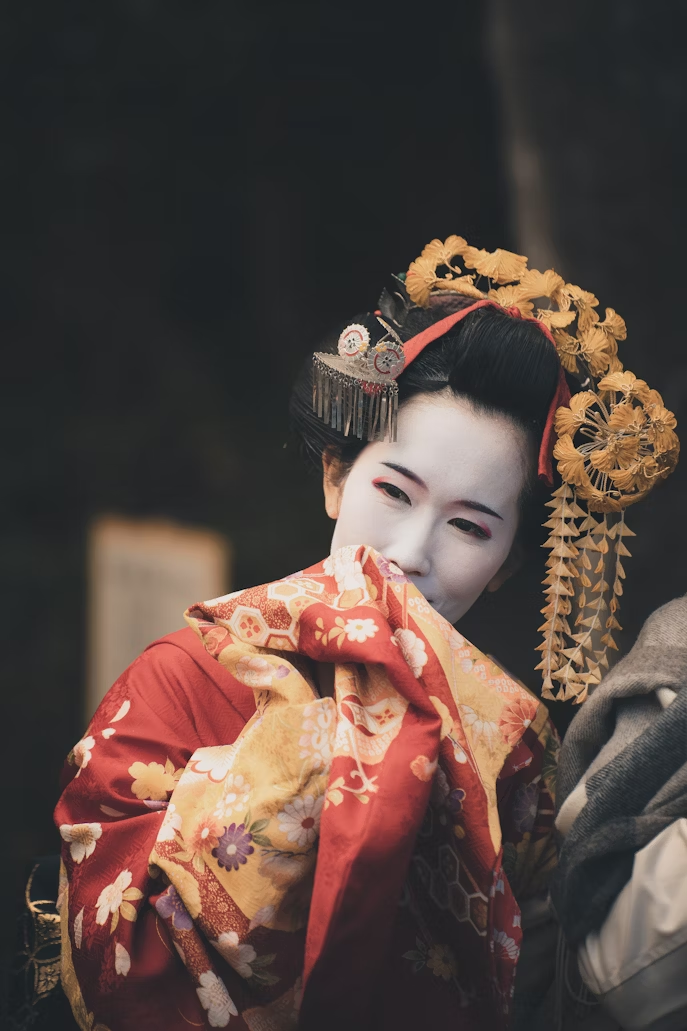
DETAILED ITINERARY
Days 1-2: Fly Overnight to Fukuoka Meals: D Fly overnight to the charming city of Fukuoka, the gateway to
the island of Kyushu. Depending on your time of arrival, the rest of the day is yours to start soaking up the local culture before dinner.
Please note: Early check in is not included. If your flight arrives in the morning and you wish to arrange this, please speak to your reservations consultant.
You will be transferred by shared coach with other passengers who are not part of a Wendy Wu Tour. If you are on a shared bus
transfer, you may have to walk for a few minutes to get to your hotel. Transfers will differ depending on group size.
Destination Information
Fukuoka (Hakata) – Fukuoka sits on the northern shore of Japan’s Kyushu Island. It is Kyushu’s largest city, and the sixth-largest city in all of Japan. As the closest major city to the Asian mainland, it has a long history as a prominent merchant harbour and centre of trade. One of the main districts here, Hakata, was previously a separate city on the east bank of the river. The two cities were combined in the late 19th century. Although Hakata now technically refers to a specific district, you will find that some locals, signs and place names still refer to the whole city as Hakata.
Day 3: Explore Nagasaki Meals: B, L, D
Head to the train station and board the Limited Express service to Nagasaki on the western coast – a journey of approximately two hours. Upon arrival, enjoy a stroll through the Glover Garden, an open-air museum built for the Scottish merchant who contributed to the industrialisation of Japan. Visit the Oura Catholic Church and Atomic Bomb Museum before returning to Fukuoka by train.
You will be on your feet for approximately 4-5 hours today. Please note that Nagasaki is a hilly city and good shoes are recommended.
Please note that the above timings are approximate. Throughout your time in Japan, there may be occasions when your morning and afternoon excursions are swapped over, in order to match local availability, or to avoid congestion at certain sites. Your guide will have the most up-to-date information.
Please also note that removing your shoes is a typical requirement in many venues across Japan, including temples, tea houses, cultural venues, and even some boats and restaurants. Bare feet are not usually accepted. Therefore, we recommend carrying a spare pair of socks in your day bag throughout your time in Japan.
Destination Information
Nagasaki – Nagasaki is Japan’s closest port city to mainland Asia, founded by the Portuguese in the 16th century. It is widely known as the second Japanese city to be destroyed by an atomic bomb in WWII, three days after Hiroshima. Within seconds, more than ten percent of the city’s population had been wiped out.
Thomas Glover – Thomas Glover, a Scottish merchant who found favour with Emperor Meiji after helping supply the guns and warships that toppled the Shogunate (military rulers) in the 1860s. These events marked the end of foreign seclusion, and Nagasaki remained a prepared hub for Westerners in Japan until WWII.
Glover Garden – This lovely hilltop park enjoys views over Nagasaki Harbour. The park was built for Thomas Glover and contains the houses of several Western merchants, including Glover’s own. Look out for the statues of the composer Puccini and Tamaki Miura, the Japanese opera singer who famously performed the role of Cio-Cio-San in Madame Butterfly, which is set in Nagasaki.
Oura Catholic Church – Christian missionaries, including Portuguese Jesuits, were very active in Kyushu and western Japan during the 16th century. Though initially tolerated, Christianity was eventually banned by the Shogunate from 1587 to 1612; it did not publicly re-emerge for more than 200 years. After Emperor Meiji was restored, religious freedom was declared in Japan in 1873. When the French expats in Nagasaki built Oura Cathedral in Nagasaki in 1864, it prompted many ‘hidden Christians’, who had been practising Christianity in secret for generations, to come forward and publicly declare their faith. The church is dedicated to the memory of the 26 Christians who were executed in 1597.
Atomic Bomb Museum – Commemorating the atomic bombing of Nagasaki in August 1945, the museum was built in remembrance of and with respect for the victims and survivors. The museum highlights firsthand accounts from survivors of the bomb.
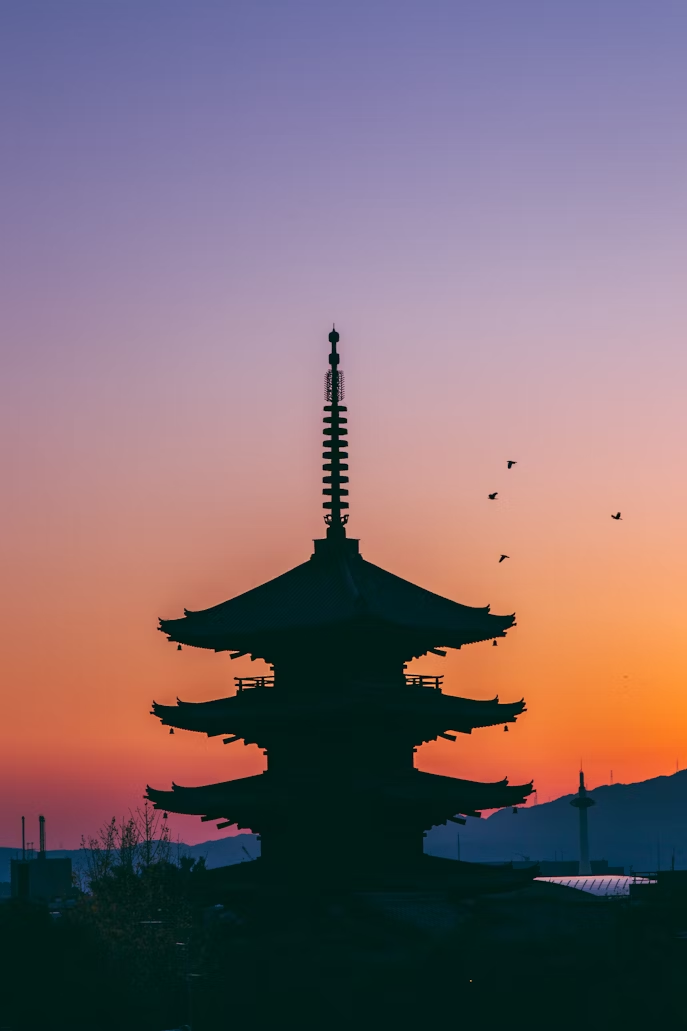
Day 4: Miyajima Island Meals: B, L, D
Bid farewell to Kyushu and board the bullet train (shinkansen) for a speedy 1h40-minute journey to Hiroshima, located on Japan’s largest island, Honshu.
Please note that due to luggage restrictions on the bullet train, your luggage will be transferred directly to Osaka (max 1 case per person). You will need an overnight bag for your two nights in Hiroshima.
Upon arrival in Hiroshima, take the ferry across the Seto Inland Sea to the holy island of Miyajima. Here, visit the Itsukushima
Shrine and enjoy a momiji manju-making experience, during which you will see how these local treats have been made for more than a hundred years. Later, return to Hiroshima for dinner.
Destination Information
Hiroshima – At 8.15 a.m. on 6th August 1945, the US military dropped the world’s first nuclear bomb on Hiroshima. The destructive power obliterated nearly everything within a 2km radius, killing more than 70,000 people immediately; a further 20-70,000 subsequently died from injuries or radiation within the next year. Today, the city has risen phoenix-like from the ashes; it is now a powerful international symbol for peace.
Miyajima – Miyajima is a small island outside of Hiroshima. While officially named Itsukushima, the island is more commonly referred to as Miyajima, meaning ‘Shrine Island’. This is because the island is well-known for its main attraction, Itsukushima Shrine, a giant torii gate, which at high tide seems to float on the water.
Momiji Manju – A local speciality on the island of Miyajima, momiji manju is a small, maple leaf- shaped cake filled with red bean paste.
Day 5: Hiroshima Highlights Meals: B, L, D Spend the day in Hiroshima. Begin with a visit to the Peace
Memorial Park and Museum, where you will have the
opportunity to pay homage to the victims of the 1945 atomic bomb. Please be aware that the museum may be confronting and upsetting for some group members and it is at your discretion if you wish to visit or enjoy time at leisure exploring the Peace Memorial Park.
Enjoy okonomiyaki for lunch before ascending Orizuru Tower to view the city from above, followed by a stroll through the historical Shukkeien Garden.
You will be on your feet for approximately 4 hours today.
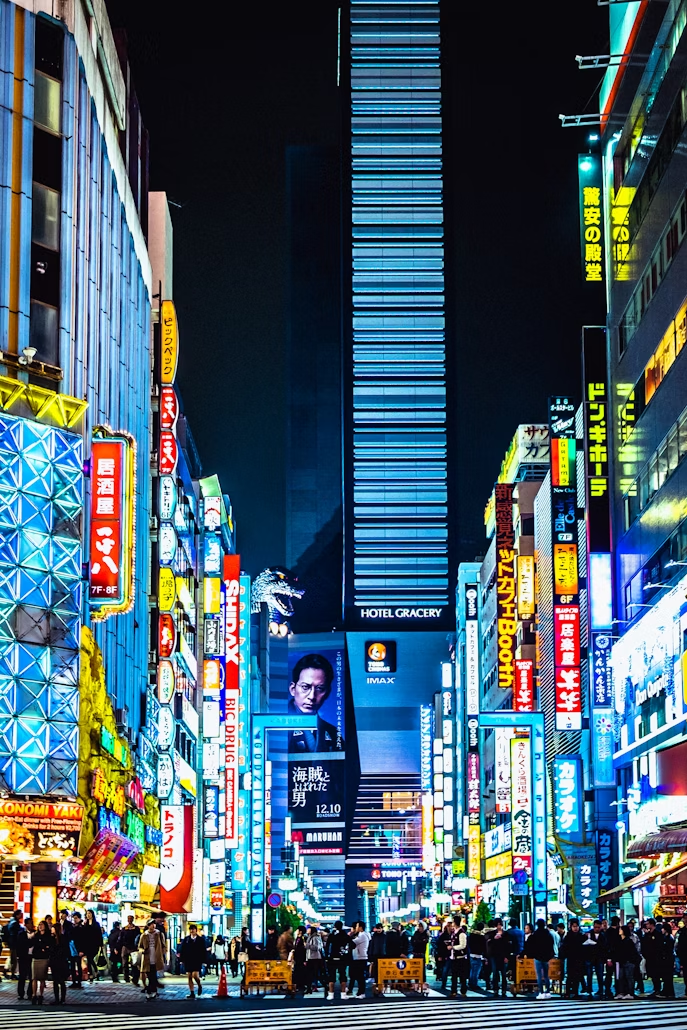
Destination Information
Peace Memorial Park and Museum – The Peace Memorial Park and Museum is one of the most prominent features of the city. The trees, lawns and walking paths are in stark contrast to the surrounding downtown area. Before the bomb, this area was the political and commercial heart of the city and is why it was chosen as the target. The museum focuses on the events of August 6th and the ensuing outcome for the residents.
Okonomiyaki – Okonomiyaki is a traditional Japanese savoury pancake, the name is derived from the word “okonomi” meaning “how you like” and “yaki” meaning “cooked”.
Orizuru Tower – The 50-metre-tall Orizuru Tower is located beside the A-Bomb Dome and is one of the few tall buildings around the Peace Memorial Park. It offers a great view of the surroundings, including the less commonly seen view of the A-Bomb Dome from above.
Shukkeien Garden – Shukkeien Garden was created following the completion of Hiroshima Castle in 1620. Its name can be translated to mean “shrunken scenery garden”, perfect for a garden that represents beautiful valleys, mountains and forests in miniature form.
Day 6: Admire Himeji Castle Meals: B, L, D Depart Hiroshima by bullet train. An hour’s journey brings you
to Himeji, where you will explore the magnificent 17th-century
Himeji Castle and the neighbouring Koko-en Gardens. Later, take the Limited Express to Osaka, your home for the next two nights.
Please note: The castle is largely in its original condition, including steep, polished wooden steps, so please be mindful of your step when strolling around. You will have to remove your shoes before walking along some of the wooden floors. You will be on your feet for 3-3.5 hours during the visit. If you do not
wish to visit the castle or climb the steps, you may enjoy the grounds independently instead; please inform your guide in this instance.
After the reopening in March 2015, Himeji Castle has welcomed many visitors. As such, they now issue numbered tickets to visitors in order to limit the number of people who can enter the Main Keep, reducing congestion, waiting time, and to protect the cultural properties. Please note that this means that there may be rare cases where some visitors are not allowed to enter the Main Keep.
Destination Information
Himeji Castle – The largest castle in Japan, Himeji is also widely considered one of Japan’s most beautiful castles. It is one of the best-preserved original castles in Japan, having never been destroyed by war, earthquake or fire. Though fortifications began in the 1400s, the castle as it survives today was completed in 1609. Floors are largely unfurnished.
Koko-en Garden – Koko-en opened in 1992, but its 9 beautiful gardens were built in the style of the Edo period of 1603-1807. Edo period gardens are characterised by their return to extravagance and recreation, in sharp contrast with the minimalism of the Zen-influenced Muromachi period, which had come before. The gardens are built on the former site of the feudal lord’s west residence.
Osaka – Osaka, formerly known as Naniwa, is Japan’s third largest city and the economic
powerhouse of the Kansai region.
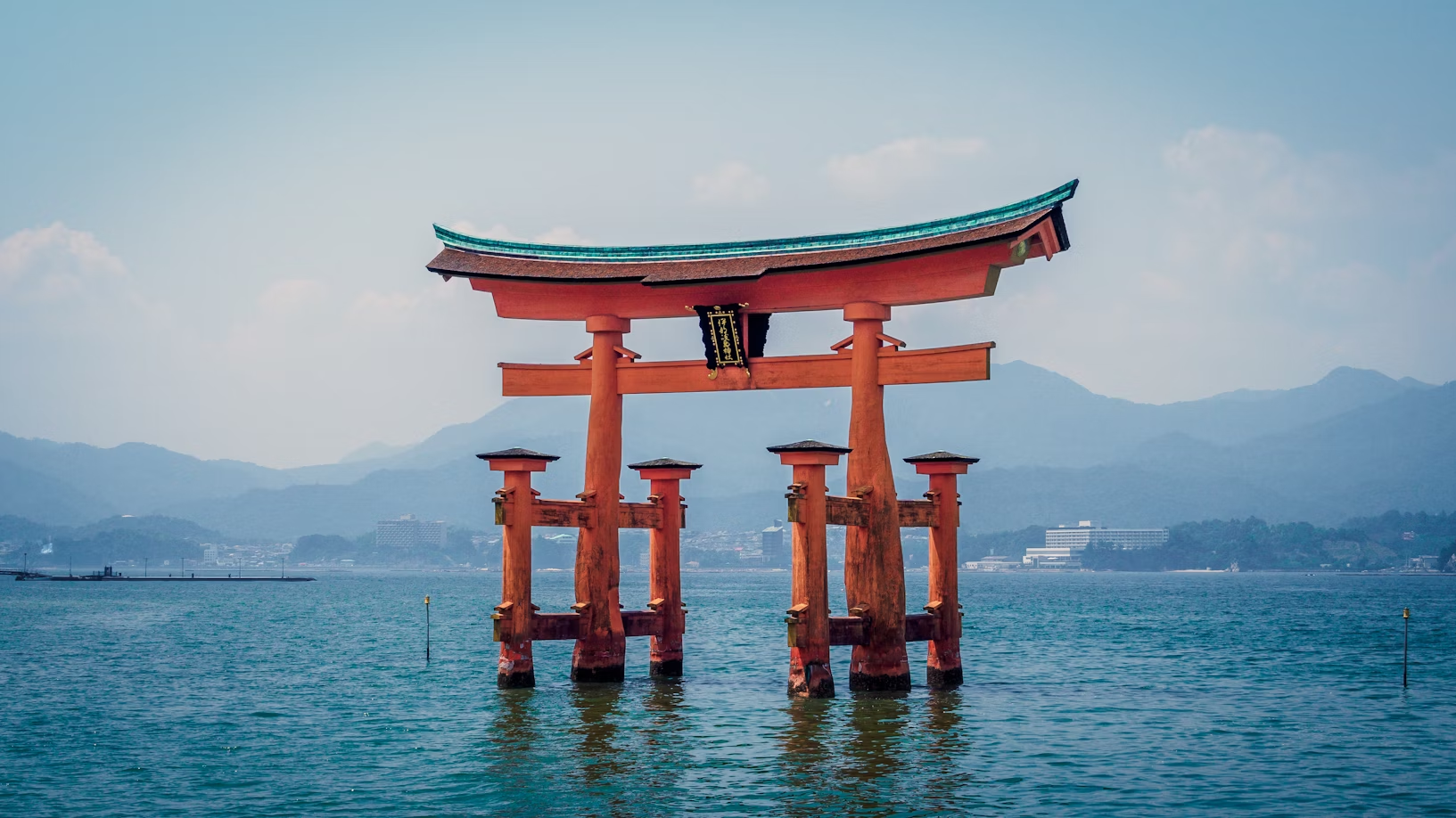
Day 7: Osaka & Nara Day Trip Meals: B, L, D Begin with a visit to Osaka’s Umeda Sky Building for
panoramic views across the city. After lunch, drive
approximately one hour to Nara, Japan’s former imperial capital, which is home to 8 UNESCO World Heritage Sites. Sightseeing here will be about 3 hours on foot, and may include a walk of up to 15 minutes from the coach parking area. Look out for the park’s beautiful resident sika deer, who have learned to bow to visitors!
Visit Todaiji Temple, the world’s largest wooden structure. This
temple is home to the Daibutsu, an eighth-century bronze
Buddha standing almost 15 metres tall. Finally, enjoy an ink-making and calligraphy class before returning to Osaka. Please note that as with many sites in Japan, you will be required to remove your shoes before entering the venue.
Destination Information
Umeda Sky Building – The Umeda Sky Building is one of the tallest buildings in Osaka Prefecture and is one of the most recognisable landmarks in Osaka. The 173-metre tall building consists of two towers connect by the stunning Floating Garden Observatory, which offers panoramic views of the city.
Nara – Nara was Japan’s first permanent capital, from 710 until 794, when it was moved to Kyoto. It remains full of historic treasures, including 8 UNESCO World Heritage Sites.
Todaiji Temple – The UNESCO-listed Todaiji is one of the Seven Great Temples of Japan and is home to the Daibutsu, one of the largest bronze Buddha statues in the world.
Day 8: Kyoto’s Temples and Arashiyama Meals: B, L, D
Destination Information
Kyoto – Kyoto was the ancient capital of Japan from 794 until the late 1860s, when it was moved to Tokyo (then Edo) following the Meiji Restoration. Many national treasures can be found in Kyoto and in nearby Nara, including old shrines and temples, screen paintings, beautiful gardens, and statues of Buddha.
Ryoan-ji Temple – Ryoan-ji Temple is a Zen temple renowned for its garden, which features a dry, sand landscape with large rocks and smooth pebbles. The garden has fifteen stones, cleverly arranged so that one rock is always hidden from view at any angle. Fifteen is considered the number of perfection; just as no individual is perfect, viewers are unable to see all the stones. It is a reminder of one’s imperfect and limited perspective.
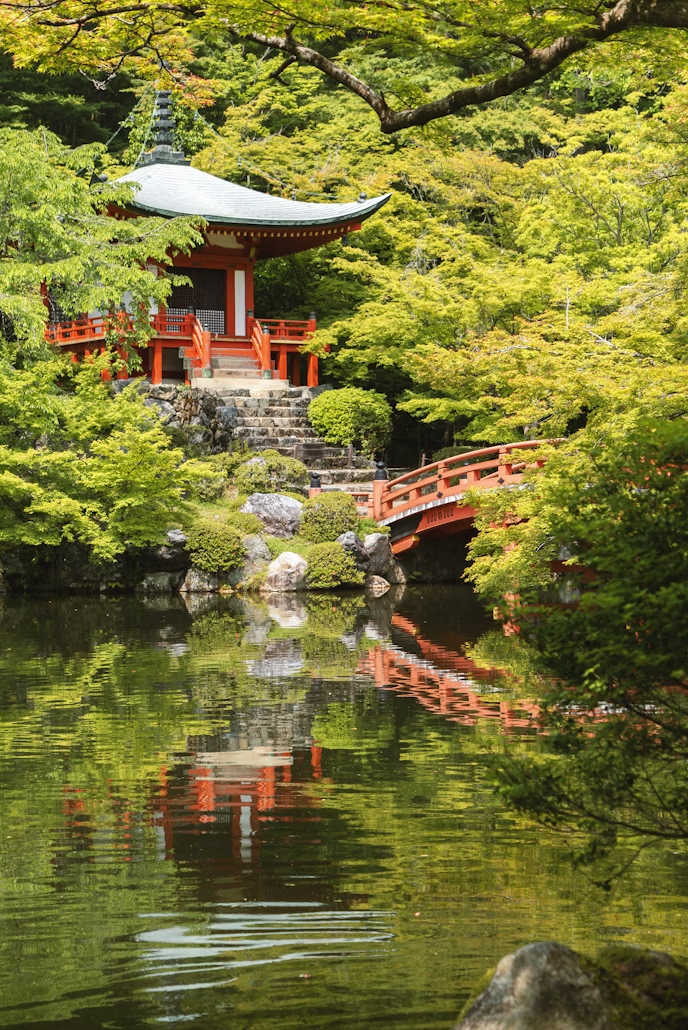
Kinkakuji Temple (Golden Pavilion) – This Zen Buddhist temple sits over a ‘mirror pond’ in a classical garden of the ‘go round’ style. The top two floors are covered in pure gold leaf. The temple is an excellent example of the Japanese design principle of ‘shakkei’, meaning borrowed scenery, which connects the building with its wider setting.
Day 9: Tea Ceremony & Fan Painting Meals: B, L, D The day begins with a visit to Kiyomizu-dera, one of the most
visited temples in Kyoto. You will spend 1.5 hours on foot exploring the temple.
Later, witness the age-old rituals of a tea ceremony before a Zen meditation experience. Afterwards, your immersive experience continues with a short fan painting class, where you will learn the technique of this highly refined and sought- after visual art.
You will need to remove your shoes at the temple and at the crafts venue.
This afternoon, take a stroll in the Gion area, Kyoto’s historic geisha district. Geisha are called geiko in Kyoto dialect; the term for a trainee geisha is maiko. Please note that spotting a geisha is quite rare, partially due to poor behaviour by global tourists in recent years. If you are lucky enough to spot a geisha, please behave respectfully. Photographing a geisha without her consent is punishable with a fine according to Kyoto law.
Destination Information
Kiyomizu-dera – Kiyomizu-dera literally translates to “Pure Water Temple” after being founded on the site of Otowa Waterfall in 780. The temple is famous for its wooden stage that juts out 13 metres above the hillside. The numerous cherry and maple trees below offer a beautiful sea of colours in spring and autumn.
Gion – Historically, Gion was Kyoto’s most famous geisha district, filled with shops, restaurants and ochaya (teahouses). Today, it is still a charming area to wander, with beautiful, well-preserved architecture lining its charming streets.
Day 10: Explore Kanazawa Meals: B, L, D
This morning, travel approximately 2 hours by Limited Express train to Kanazawa. On arrival, head to Kenrokuen, one of the Three Great Gardens of Japan, and soak up its beauty before visiting the Nomura Samurai House and Kunani Pottery Factory. You will be required to remove your shoes.
Please note that your luggage will be transferred directly to Takayama (max one suitcase per person). You will need to pack an overnight bag for one night in Kanazawa.
Destination Information
Kanazawa – Kanazawa is the capital of the Ishikawa Prefecture and is known for its beautiful samurai and geisha districts, as well as its stunning Kenrokuen Garden.
Kenrokuen Garden– One of Japan’s ‘Three Great Gardens’, Kenrokuen dates back to the early 17th century and is notable for its stunning beauty in all seasons. The spacious grounds were previously the outer garden of Kanazawa Castle, constructed by the Maeda family over a period of almost two centuries. The name Kenrokuen means ‘having six features’, these six being spaciousness, tranquillity, artifice, antiquity, water sources and magnificent panoramas.
Nomura Samurai House – Nomura was a high-ranked samurai of the Meiji Period. Visit this restored Samurai residence, with its beautiful garden.
Day 11: Shirakawago Village Meals: B, L, D Drive from Kanazawa to Takayama, stopping en route at Inami
and Shirakawa-go. In Inami, enjoy a sake wooden cup making experience and sake tasting. Afterwards, continue to the UNESCO-listed village of Shirakawago, famous for its traditional wooden gassho farmhouses. With their steep thatched roofs, these houses are some of the most charming sights in Japan.
Continue to your hotel in Takayama for a two-night stay.
Destination Information
Takayama – Boasting one of Japan’s most atmospheric townscapes, the layout of Takayama dates
back to the 17th century and is home to much Meiji architecture.
Shirakawago – This UNESCO-listed heritage village is famous for its unusual architectural style known as Gassho-Zukuri (lit. hands in prayer). The steeply thatched roofs of these houses are tilted at a steep angle for two reasons: first, to prevent heavy snow from accumulating in winter, and second, to create spacious attics for silkworm cultivation. The houses are usually built from local cypress wood.
Gifu Prefecture – The mountainous terrain here is not conducive to growing rice; buckwheat is the dominant crop. The region is known for its washi paper production and silkworm farming.
Day 12: Discover Takayama Meals: B, L, D Take a morning walking tour of Takayama. During the Edo
period, this lovely mountain town was a hub for craftsmen, farmers and merchants from the surrounding mountains.
Head to the Miyagawa Morning Market, where you can sample some of the delicious local fruits and vegetables (at your own expense). Later, take a leisurely stroll around the traditional houses of the area and visit Takayama Jinya. If local opening hours permit, you will also visit the Takayama Festival Floats Exhibition Hall.
Enjoy some time this afternoon at leisure to explore the town.
Destination Information
Miyagawa Morning Market – Here, there are a number of stalls selling fresh vegetables, local craft works and local food products.
Takayama Festival Floats Exhibition Hall – This hall exhibits some of the ‘yatai’ from Takayama’s famous festival; a twice yearly celebration when these huge parade festival floats are carried through the streets. Some date as far back as the 17th century.
Takayama Jinya – A former government office dating back to the Edo Period, Takayama Jinya is the only one of its type still remaining. The main work of the office was to handle legal cases and tax collection.
Kamisannomachi Street – This well-preserved part of the historic city features traditional houses, sake breweries, shops and cafes — some of which have been operating for centuries.
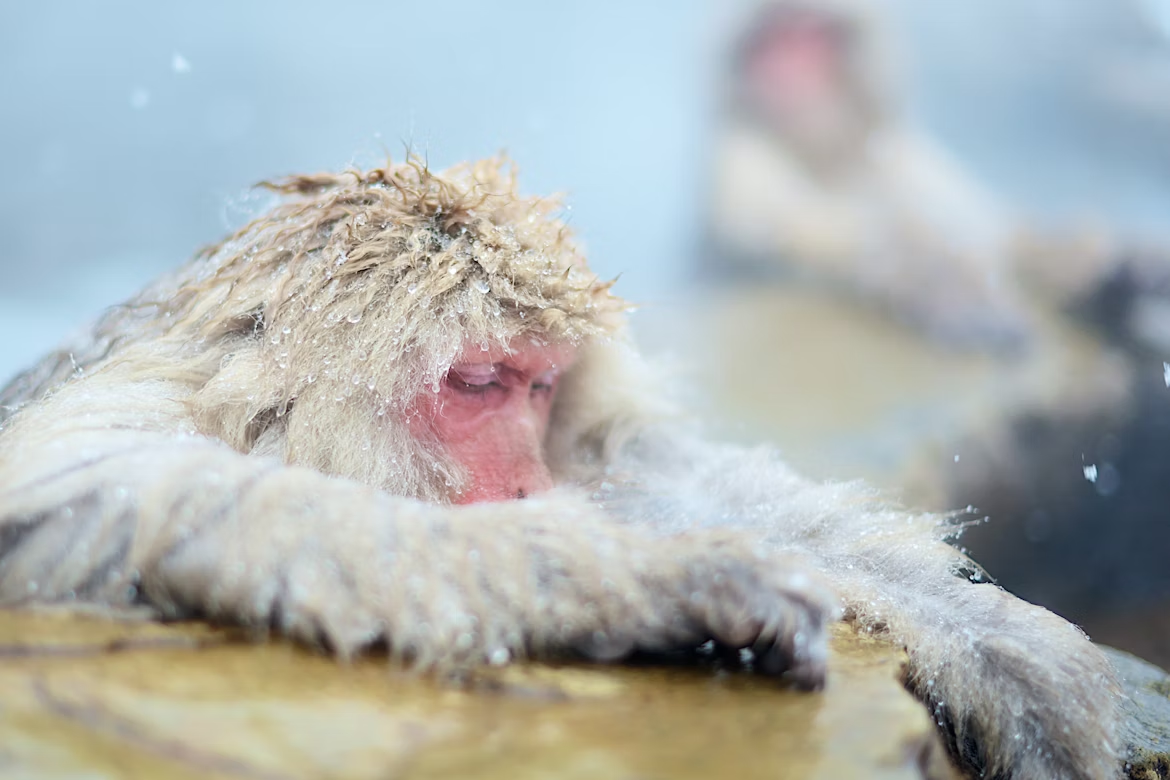
Day 13: Snow Monkeys Meals: B, L, D
Drive through the Japanese Alps, enjoying the mountain scenery en route to Matsumoto and Nagano.
After lunch, head to Yudanaka in search of the snow monkeys (Japanese Macaques) at Jigokudani Yaen-Koen Monkey Park. Good shoes are required. Enjoy a gentle trek through the sloping valley (30-40 minutes each way) to reach the monkey pool, and watch them bathe and play in the warm waters.
Drive south to Matsumoto and check in at your hotel.
Please note: From the parking area to the main snow monkey pool at Yudanaka, you will need to walk 30-40 minutes each way through the sloping forested valley. Good shoes are required, and the start and end points of the trail are steeper than the main walk; paths may be slippery after rain or snow. If you do not wish to walk through the valley, you will be able to wait in the café area near to the coach park.
Please keep in mind that the snow monkeys are wild and sighting them is never guaranteed, particularly during the breeding season which runs from late September through to November.
Destination Information
Jigokudani Yaen-Koen – Home to Japanese Macaques, also known as Snow Monkeys, Jigokudani literally means ‘hell’s valley’. It is named this because of the steam and boiling water that bubbles out of small crevices in the ground. It is in the baths of this hot water that the resident Japanese Macaques like to soak. The monkeys live in large social groups and it can be quite entertaining to watch their interactions.
Day 14: Matsumoto Castle Meals: B, L, D
Explore the formidable 16th century Matsumoto Castle, nicknamed ‘Crow Castle’ for its intense black exterior. Later, head to a miso house and learn about the process of making this famous Japanese seasoning before lunch. After lunch, drive approximately 1 hour to Narai-juku, one of the best- preserved post towns on the Nakasendo Way, and soak up its historic atmosphere. Continue a further 1 hour by road to the Suwa region and check into your hotel.
Please note: You will need to walk around 15 minutes on flat road to reach the castle from the coach parking area. You will need to remove your shoes to access the castle; please note that there are some very steep wooden stairs to reach the higher floors. Please take your time and be mindful of those coming the other way. If you choose not to look inside the castle, you can enjoy the surrounding gardens, moat and architecture.
Destination Information
Matsumoto Castle – Nicknamed Crow Castle due to its dark black exterior, the Matsumoto Castle dates back to the 16th century and is the oldest wooden castle in Japan. It is a ‘hirajiro’, meaning that the castle is built on plains rather than a hill or mountain.
Miso – Miso is a staple Japanese seasoning; a fermented paste created from a mixture of soybeans, sea salt and rice koji. It is often used in soups, marinades and condiments.
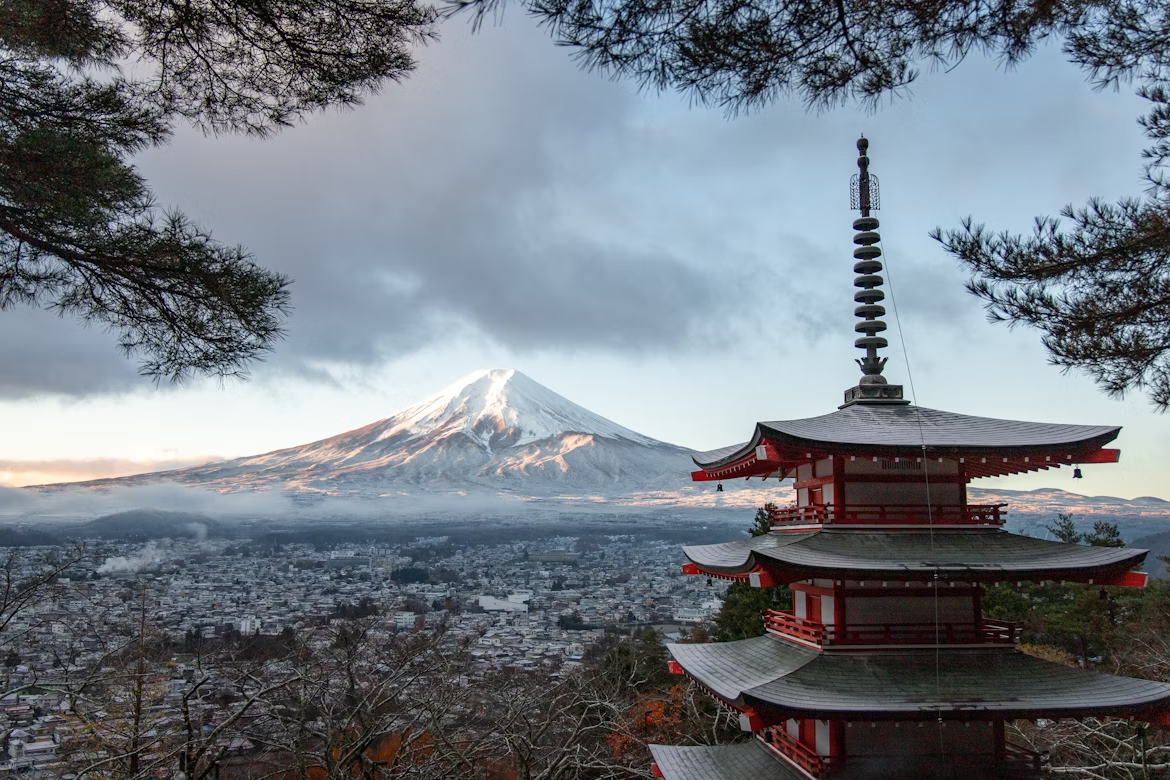
Day 15: Mount Fuji Meals: B, L, D
Drive approximately 1 and a half hours by road to the spectacular Fuji region. The calm waters of the local lakes, formed by past volcanic eruptions, reflect Fuji’s picture- perfect cone.
The 5th Station is occasionally closed due to inclement weather. If the centre is closed, or if your guide feels that visibility is too poor to make this visit worthwhile, your guide may take you to Fuji San World Heritage Centre instead (subject to local opening hours).
Later, continue to tranquil Lake Ashi, and take a short cruise across the water before a short ride on the Komagatake cable car (weather permitting) for spectacular views of Mount Fuji and the lake below. On a clear day, you can even see Tokyo and the Pacific Ocean. Later, continue your journey by road for around 2 hours to Tokyo, Japan’s capital city.
Destination Information
Mt Fuji – At 3,776m, Mount Fuji is the highest of Japan’s mountains and an iconic symbol of the country. Mount Fuji is notoriously shy and is often enveloped by clouds.
Lake Ashi – Formed after Mount Hakone’s last eruption 3000 years ago, Lake Ashi is the symbol
of Hakone and on a clear day offers spectacular views of Mount Fuji in the distance.
Tokyo – Tokyo is a city of contrasts, famous for its neon-lit landscape, towering skyscrapers, peaceful shrines and lovingly tended gardens. Although long the political and cultural centre of Japan, Tokyo became the official capital when the Meiji Emperor moved it to Tokyo in 1867.
Day 16: Tour Tokyo Meals: B, L, D
A dazzling, high-tech metropolis, Japan’s capital has wonderfully traditional roots. Begin the day with a leisurely stroll through Hamarikyu Gardens. Next, take part in a relaxed sushi-making class and enjoy your own creations for lunch! Later, soak up the atmosphere at Sensoji Temple in the Asakausa District. Return to the hotel, driving past the Imperial Palace Plaza en route.
Please note that you will be on your feet for approximately 4 hours today, including in some busy areas.
Destination Information
Hamarikyu Gardens – Hamarikyu Gardens is a beautiful example of Japanese garden style which sits at the mouth of the Sumida River. The traditional garden stands in bold contrast to the adjacent skyscrapers.
Asakusa – Asakusa is the centre of Tokyo’s Shitamachi (Old Town) District, with its traditional craft
shops and street food stalls. Asakusa retains the atmosphere of an older Tokyo.
Sensoji Temple – Sensoji Temple is an ancient Buddhist Temple and the oldest in Tokyo. The temple was originally founded in the 7th century. The temple adorns an image of the Buddhist Goddess Kannon, who was said to have been rescued by two fishermen from the Sumida River in Tokyo.
Imperial Palace Plaza – Imperial Palace Plaza is the main residence of the Emperor of Japan. Built on the original site of Edo Castle, the Plaza is made up of a palace (closed to the public), a museum and a large park.
Day 17: Meiji Shrine Meals: B, L, D
Begin the day at the Tokyo Metropolitan Building and ascend to the observation deck for breathtaking views over the sprawling city. Next, soak up the atmosphere at the peaceful Meiji Jingu Shrine and drive by the world-famous Shibuya crossing. End the day with a relaxing dinner cruise on Tokyo Bay for some excellent city vistas.
Please note that your luggage will be transferred directly from Tokyo to Sapporo (max one suitcase per person). You will need
to pack an overnight bag for three nights, which will cover your last night in Tokyo and time in Sendai and Hakodate.

Destination Information
Tokyo Metropolitan Government Building – The 243-metre-tall Tokyo Metropolitan Government Building has two towers, each housing an observatory at a height of 202 metres.
Meiji Jingu Shrine – Built in 1920, Meiji Jingu Shrine is a Shinto shrine dedicated to the deified spirits of Emperor Meiji and his wife, Empress Shōken. The Meiji period in Japan brought modernisation and westernisation, allowing the country to join the world’s major powers.
Shibuya Crossing – This is the world’s busiest pedestrian crossing, inundated with so many advertisements that it is often compared to Times Square. An average of 3000 pedestrians cross here every two minutes, yet long traffic jams are rare.
Day 18: Sip Whisky in Sendai Meals: B, L, D Today, your journey turns toward northern Honshu. Board the
bullet train for a 90-minute ride to Sendai, the largest city in Tohoku. Upon arrival, transfer by road to Matsushima and enjoy a cruise on lovely Matsushima Bay.
If today’s excursions fall on a weekday, you will visit the Nikka Whisky factory in Sendai.
If today’s excursions fall on a Saturday or Sunday, you will not visit the factory. Instead, you will visit Hakodate Winery tomorrow.
Destination Information
Sendai – The modern city was founded by Date Masamune, one of Japan’s most powerful feudal lords, in the early 17th century. The city is known for Tohoku University, one of the best in Japan. In 1913, it became the first university in Japan to accept female students.
Matsushima Bay – Matsushima Bay is considered one of Japan’s Three Great Sights, along with
Miyajima and Amanohashidate. The bay is dotted by over 200 small islands covered by pine trees.
Day 19: Explore Hakodate Meals: B, L, D
Say goodbye to Honshu Island as you board the bullet train for a 3.5-hour journey to Hakodate on the coast of Hokkaido, Japan’s northernmost major island. On arrival, visit the Goryokaku Tower, a star-shaped fortress, followed by some time at leisure. This evening, journey on the Hakodate Ropeway and enjoy the fabulous views of the city below (weather permitting).
Destination Information
Hakodate – Hakodate is located on Hokkaido’s southern tip. It is known for its delicious, fresh seafood. Hakodate was one of the first Japanese harbour cities to be opened to international trade after the country’s era of isolation, and as such has experienced notable foreign influence.
Goryokaku Tower – The 107 metre-tall Goryokaku Tower gives a bird’s eye view of the star-shaped Fort Goryokaku – a Western-style citadel, which was built in the last years of the Edo Period. In 1869, the fort was the site of one of the last battles between the Tokugawa Shogunate, whose forces were now in tatters, and the armies of the newly formed imperial government, which supported the Emperor Meiji and brought about the Meiji Restoration.
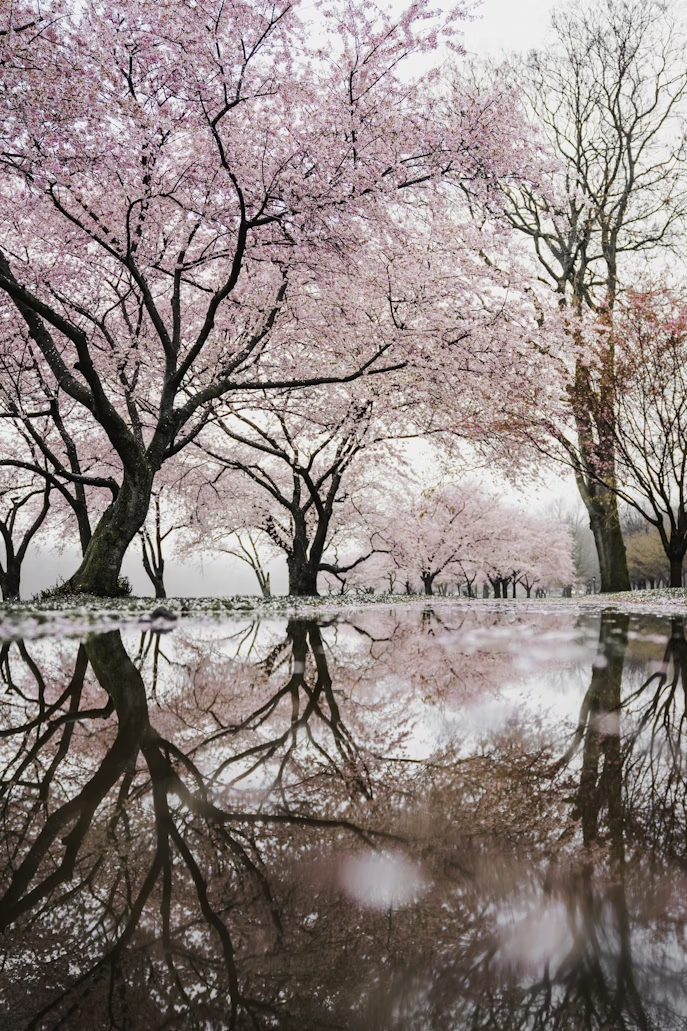
Day 20: Sapporo Sightseeing Meals: B, L, D
Destination Information
Sapporo – The capital of Hokkaido, Japan’s northernmost island, Sapporo was made famous by the Winter Olympics of 1972. Sapporo is also one of the nation’s youngest major cities, and is famous for the Snow Festival held annually in February.
Sapporo Clock Tower – The clock that features on the Sapporo Clock Tower was purchased in 1881 for Boston while the building was constructed as a drill hall for the Sapporo Agricultural College. Today it is a museum with displays showing the building’s history.
Sapporo Beer Museum – Sapporo Beer, one of the oldest and most popular beer brands in the country, has been brewed in Sapporo since 1877. A former brewery from that time now hosts the Sapporo Beer Museum.
Day 21: Depart Sapporo Meals: B
This morning is free at leisure before transferring to the airport for your return flight home.
Please note: Only breakfast is included today. Late check-out is not included in our Japan by Rail tour. If you wish to book a late check-out for your final day in Sapporo, please contact our reservations department who can confirm the additional price and make this arrangement for you, subject to availability at the hotel.
Please note: You may be transferred by shared coach with other passengers who are not part of a Wendy Wu Tour. If you are on a shared coach transfer, you may have to walk for a few minutes to get to your pick-up point. In this case, your guide will distribute transfer tickets in advance.
JAPAN BY RAIL TRAVEL INFORMATION
EATING IN JAPAN:
Japanese cuisine is delicious, colourful and healthy. Meals are usually served with a bowl of rice and a bowl of miso soup and consist usually of fish, pickled vegetables and meat. Japan’s other main staple is noodles, the most famous being Udon and Soba. All meals (excluding drinks) are included in our fully inclusive group tours from the groups’ arrival until the day of departure.
Our schedule of meals is designed so that you can experience the local dishes; their individual flavours as well as different ways they are prepared and cooked throughout Japan. Food is an important element of Japanese culture. It is a time for families and friends to come together and much of family life revolves around the dinner table. Most food is eaten with chopsticks – Western cutlery is not always available at restaurants.
Breakfast will mostly be buffet-style but may be a set menu. Lunches are mostly pre-set options as is custom in many local restaurants. Dinner is usually buffet-style, featuring a wide selection of high-quality Japanese and Western dishes, but may occasionally be a set menu. We usually find this style of dining suits the wide and varied tastes of our customers on tour. These are also pre-booked in advance by your guides. This will provide greater flexibility and allow you to sample a broad range of local cuisines and dishes.
All beverages will be at your own expense and are readily available. Please note: if you have any dietary requirements, you must inform us before your tour starts, and please be aware that restaurants may not always be able to accommodate these. Gluten-free food may not be as readily available as in the UK/Ireland.
On some days where lots of sights are covered, dinner times may be early and your tour group may head directly to the restaurant after sightseeing without stopping at your hotel to freshen up.
ACCOMMODATION:
Your accommodation is selected for convenience of location, comfort or character, and can range from a business hotel in one city to a family run guesthouse in a smaller town. In more remote areas, accommodation may be of a lower standard and may not have all western amenities. In the Fuji area, hotels tend to be more traditional in style and culture. In this area, you may be asked to take your shoes off at the door and store them in a secure locker – this is very traditional Japanese culture. Please note, double bed requests can be made at time of booking but cannot be guaranteed.
Hotels are generally rated as local three to four-star standard, but please note that there is no international classification system for hotels and differences in facilities and quality will exist between your home country and Japan.
Please note that in Japan, hotel rooms and bathrooms are renowned for being small. Standard single rooms are usually smaller than a standard double or twin room, contain one small double bed (or one single bed), and are designed for one person to use.
All group tour hotels have private western bathroom facilities, air conditioning, TV and a telephone. Hotels in Japan often do not have porters and you will be required to carry your own luggage. If you experience any difficulty, please speak to your National Escort/Local Guide. Rest assured that all hotels used by Wendy Wu Tours are regularly inspected by our staff and our partners to ensure that standards meet your needs.



